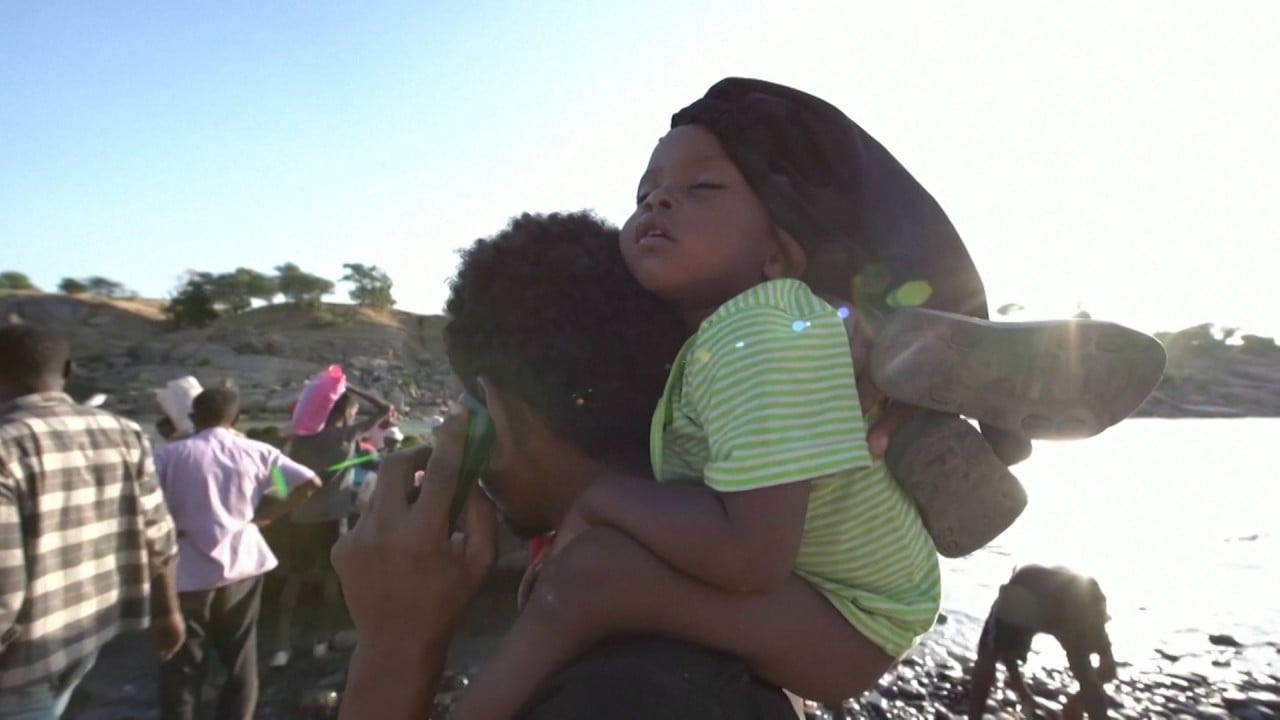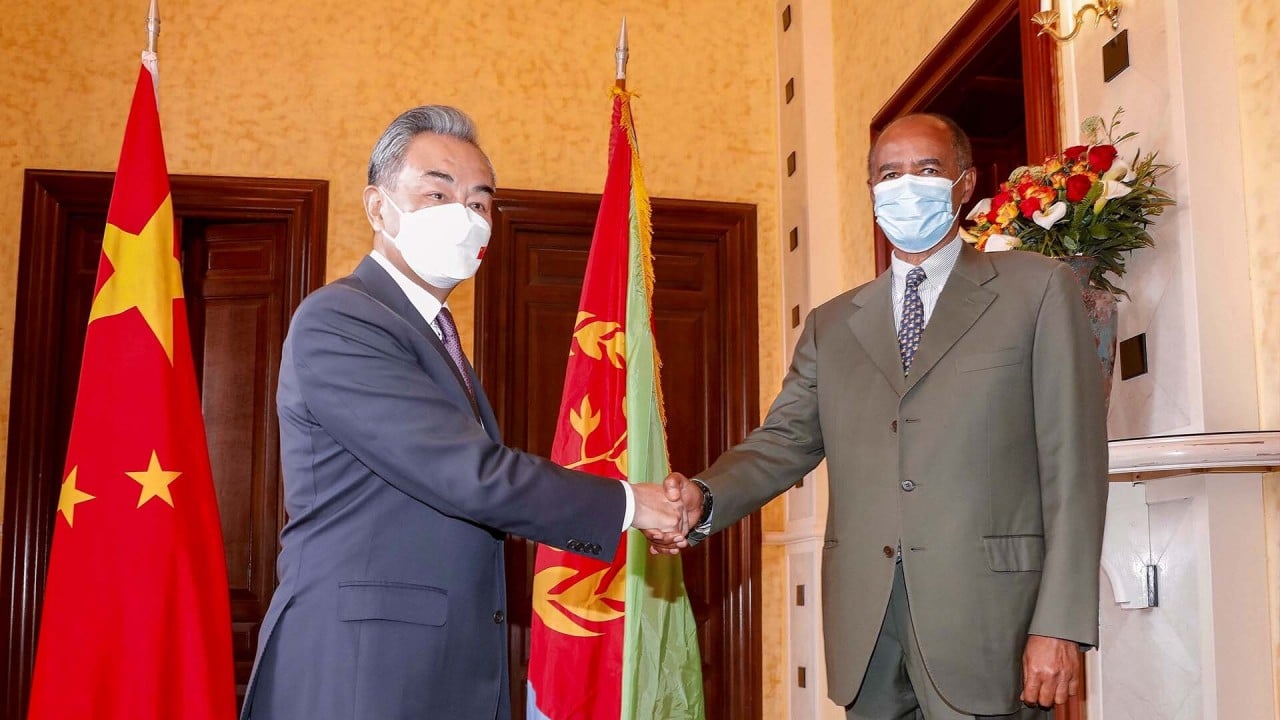
Sanctions on Russia may leave a gap in the African arms market. China may be ready to step in
- China is a relatively small player in a market dominated by Russia but could be well placed to grow its share
- Major African buyers such as Egypt are looking to diversify their supplies and Beijing has close ties with many countries on the continent
Russia provides more than half of all arms sold in Africa, which is more than double the next largest supplier, France, followed by the United States and China, according to analysts.
Joseph Siegle, research director for the Africa Centre for Strategic Studies at the National Defence University in Washington, said Russia’s largest African customers were Algeria, Egypt and Sudan, followed by Angola.
“This is significant since it underscores Russia’s efforts to establish a foothold in North Africa,” Siegle said.
China’s Peace cable arrives in Kenya
“Along with Moscow’s support to Libyan warlord Khalifa Hifter, this establishes a Russian presence along Nato’s southern flank, allows Russia to exert influence in the eastern Mediterranean, and enables Moscow to threaten key global chokeholds in the Suez Canal and Bab al-Mandab [the strait between the Horn of Africa and Arabian peninsula].”
However, Beijing has already been making inroads into the continent by supplying other major Russian customers such as Nigeria and Ethiopia with armoured vehicles and rocket launchers respectively.
China is a comparatively small player in the African arms sales market; according to the Stockholm International Peace Research Institute (SIPRI), between 2000 and 2018, China accounted for just 7.5 per cent of the overall market. However, there are a few cases in which China is the “exporter of choice”, including Mozambique, Zimbabwe, Tanzania and Zambia.
Between 2017 and 2021, Russia accounted for 44 per cent of major arms imports, followed by the US (17 per cent), China (10 per cent) and France (6.1 per cent). But the SIPRI data does not capture small arms and light weapons, a category where China probably has a bigger share.
John Calabrese, head of the Middle East-Asia Project at American University in Washington, said that over the past five years or so, arms sales competition in Africa had intensified with major buyers such as Egypt seeking to diversify their sources.
Can China help bring peace to Middle East and Horn of Africa?
“I know that a few countries are among both Russia’s and China’s top customers, notably Algeria and Angola. In the case of Egypt, Russia has a much bigger arms sales footprint than does China,” Calabrese said.
“It is possible that China may try to capitalise on Russia being squeezed out of these markets when sanctions and financial restrictions begin to bite.”
However, Calabrese said one factor to consider was whether China could provide a ready substitute for Russian equipment.
“Some systems might be, as for years Russian arms producers have supplied the PLA,” Calabrese said.
But other foreign suppliers, such as the French, may also seek to fill the gap, particularly in Egypt, and a third factor is whether China can offer favourable payment terms and discounts.
Moses B. Khanyile, director at the Centre for Military Studies at Stellenbosch University in South Africa, said given the high presence of Russia’s military hardware in Africa, sanctions would make it harder to maintain, repair and overhaul equipment.
Khanyile said the void created by Russia’s suspension would have to be filled.
He also noted that the two countries – along with France, Germany and the US – were the world’s top five exporters, who between them made up 76 per cent of the global arms trade between 2016 and 2020.
“It is therefore evident that these are the countries that will compete to replace Russia as a major arms supplier in Africa,” Khanyile said.
He said China was likely to be a major beneficiary of this void, adding that its existing arms deals could be supported by other trade and diplomatic relations that China already has with African countries.
China had been gaining ground as an arms seller in Africa before Russia’s invasion of Ukraine, according to Luke Patey, senior researcher at the Danish Institute for International Studies.
“Chinese arms dealers such as Norinco, the Poly Group, and others have diversified Africa’s sources of weapons beyond Russia, France, and the United States,” Patey said.
“African countries are buying everything from armoured vehicles to drones from China, but it is in small arms and light weapons, like the Chinese Type 56, which is a near copy of the Russian Kalashnikov, where China is making its mark.”
He said Chinese firms would be looking to deepen their engagement, a move that would only reinforce ongoing defence and security cooperation between many African capitals and Beijing.
David Shinn, a professor at George Washington University’s Elliott School of International Affairs, said: “The war with Ukraine may make it more difficult for Russia to provide and deliver arms to African countries because of sanctions, supply chain problems, and the need to produce arms Russia can use against Ukrainians.
“This will provide an opportunity for China and a handful of other producers of low-cost arms to grab market share from Russia.”
How war in Ukraine fuels a food crisis in Africa
China’s financing of purchases is also a selling point for some African countries.
A 2020 study carried out by Jyhjong Hwang, a China-Africa researcher at Ohio State University in the US, put Zambia as the largest recipient of Chinese loans for military procurement in Africa. Of the US$1.5 billion worth of such financing advanced by Beijing between 2000 and 2017, US$600 million went to Zambia.
Most of the money, which funded the procurement of aircraft for the Zambian Air Force, came from China Exim Bank, the state-owned aerospace and defence giant Aviation Industry Corporation of China and China Poly Technologies.
China has supplied a range of aircraft to Zambia, including J-6 fighter jets, MA60 and Y-12 transport planes and combat helicopters, and also provided pilot training.



